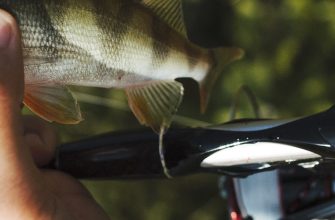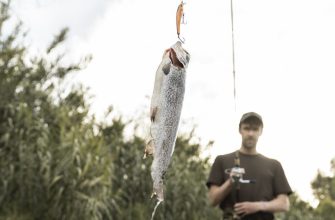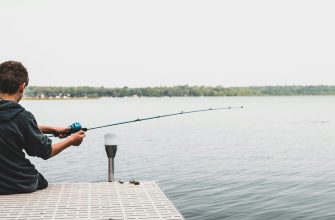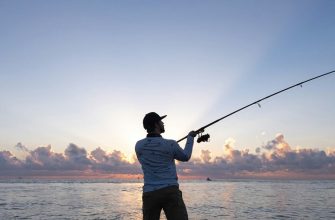- Freshwater Fish Species in Louisiana
- Common Freshwater Species in Louisiana
- Largemouth Bass
- Bluegill
- Channel Catfish
- White Crappie
- Black Crappie
- Striped Bass
- Hybrid Striped Bass
- Bream
- Unique Louisiana Species
- Yellow Bass
- Spotted Bass
- Shadow Bass
- White Bass
- Spotted Gar
- Paddlefish
- Alligator Gar
- Louisiana Freshwater Species you Cannot Harvest
- Why Can’t I Harvest All Species?
- Which Species Are Off-Limits?
- The Mussels
- The Sturgeons
- What Happens If I Harvest These Species?
- Best Freshwater Angling Destinations in Louisiana
- Red River
- Mississippi River
- Pearl River
- Sabine River
- Pontchartrain Basin
- Caddo Lake
- Lake Bistineau
- Caney Lake
- Lake D’Arbonne
- Poverty Point Reservoir
- Black Lake
- Essential Equipment for Freshwater Catching
- The Right Rod and Reel
- Tackle Box Essentials
- Louisiana-Specific Gear
- Gear Restrictions by Species
- Legal Bait Species
- Essential Tips for Catching Fish in Louisiana’s Freshwater
- Techniques for Catching
- Seasonal Factors Affecting Fish Catch
- Spring (March-May):
- Summer (June-August):
- Fall (September-November):
- Winter (December-February):
- Methods for Angling Freshwater Fish in Louisiana
- Permitted Methods
- Non-Permitted Methods
- Restrictions on Freshwater Angling in Louisiana
- Basic Recreational Fishing License
- Limits, restrictions and exceptions
- Conclusion: Embarking on Your Louisiana Freshwater Angling Adventure
- FAQs
- Q: What are some popular fish species found in the freshwater bodies of Louisiana?
- Q: Where can I find good angling spots for freshwater fishing in Louisiana?
- Q: What are some tips for catching bass in freshwater bodies in Louisiana?
- Q: What is the maximum number of pounds required to catch and keep fish for recreational anglers in Louisiana?
- Q: What is the significance of LDWF in the context of freshwater angling in Louisiana?
- Q: Are there any specific regulations or restrictions for freshwater angling along the coastal areas of Louisiana?
With thousands of miles of rivers, streams, lakes and bayous, Louisiana promises adventure for freshwater anglers of all stripes. The Sportsman’s Paradise offers abundant fisheries rich with coveted southern species – everything from hard-fighting bass to hard-shelling crawfish. Each waterway has its charm and biodiversity worth exploring.

This article aims to enrich newcomers’ introductions to Louisiana’s fisheries by covering essentials like noteworthy fish species, ethical catching methods, regulations, gear, etc. We’ll focus on fundamentals over trophies – promoting knowledge and skills for coexisting sustainably with these fragile ecosystems into the future.
So come discover why so many call Louisiana an angler’s nirvana.
Freshwater Fish Species in Louisiana
Common Freshwater Species in Louisiana
Louisiana, famously known as the Sportsman’s Paradise, boasts a wide variety of freshwater species. Here is a list of common species you might encounter:
Largemouth Bass
An aggressive species, known for their exciting fights. They are often green with dark blotches that form a horizontal stripe. In Louisiana, they can grow up to 15-20 inches. They prefer habitats with lots of cover like submerged structures or vegetation. Largemouth Bass are opportunistic predators and will eat anything that can fit into their mouths, including fish, crustaceans, and insects.
Bluegill
A member of the sunfish family, bluegills are recognized by their deep blue and purple colors on the face and gill cover. They can reach lengths of up to 12 inches in Louisiana waterbodies. Bluegills thrive in warm, quiet waters with abundant vegetation. Their diet primarily consists of aquatic insects and small invertebrates.
Channel Catfish
These are smooth-skinned and have a distinctly forked tail. They can often be found in deeper parts of rivers and lakes. Channel Catfish in Louisiana can reach sizes of up to 30 inches. They prefer deep, slow-moving water with a soft bottom. Their diet typically includes small fish, insects, and aquatic plants.
White Crappie
These species have patches across their body and can be identified by their silvery-white color. In Louisiana, they can grow up to 12-15 inches long. They prefer clear, quiet waters with abundant cover. White crappies eat mostly on smaller fish and aquatic insects.
Black Crappie
These species have a silvery-gray to green body with large round scales and can be identified by its black patches. In Louisiana, they can grow up to 12-16 inches long. They prefer clear, quiet waterbodies with abundant cover. The Black Crappie diet is similar to that of the White Crappie, consisting mostly of smaller fish and aquatic insects.
Striped Bass
They are silver, shading to olive-green on the back, with a white belly and seven or eight uninterrupted horizontal stripes on each side of the body. Stripers in Louisiana can reach sizes of up to 36 inches. They are pelagic specimens, preferring open water. Stripers are primarily piscivorous, eating a variety of small fish species.
Read more: Exploring the Diversity of Freshwater Fish in New Jersey: Common NJ Fish Species
Hybrid Striped Bass
A cross between a white bass and a striped bass is recognized by two distinct tooth patches near the midline towards the back of the tongue. Hybrid Striper can reach sizes of up to 25 inches in Louisiana. Like their Striped Bass parent, they prefer open water. They eat a variety of small fish and invertebrates.
Bream
Also known as freshwater sunfish, breams are recognized by their oval-shaped and colorful bodies, small mouths, and long, pointed pectoral fins. They can grow up to 6 inches in Louisiana. Bream prefers warm, quiet waterbodies with abundant vegetation. Their diet primarily consists of aquatic insects and small invertebrates.
Unique Louisiana Species
Louisiana is also home to several unique species that are not commonly found in other states. Here are a few:
Yellow Bass
A native Louisiana species, these are characterized by their yellowish color and distinct parallel lines down their body. In Louisiana, they can grow up to 15 inches. They prefer clear streams with sandy bottoms and are known to be active swimmers. Yellow Bass eat mostly small crustaceans and insects.
Spotted Bass
These species resemble the Largemouth Bass but are distinguished by their smaller size, the prominent dark patches along their lower sides, and a tongue patch. In Louisiana, they can grow up to 17 inches. They prefer clear streams with gravel bottoms. They are opportunistic feeders, eating a variety of insects, crustaceans, and small fish.
Shadow Bass
These species are dark with mottled sides, resembling rocks and shadows, helping them blend in with their preferred rocky habitats. In Louisiana, they can reach sizes of up to 12 inches. They prefer rocky substrates in cool, clear streams. Shadow Bass diet is similar to that of the Spotted Bass, consisting mostly of smaller fish, insects, and crustaceans.
White Bass
These species are silvery shading to dark gray or black on the back. They are found in large reservoirs and rivers, eating small fish and insects. In Louisiana, White Bass can grow up to 18 inches. They prefer large, open waters. White Bass are active predators, feeding primarily on shad and other small fish.
Spotted Gar
These prehistoric species have a narrow, long snout filled with sharp teeth. It’s known for its patches, which cover its head, body, and fins. They can reach lengths of up to 3 feet in Louisiana waterbodies. They inhabit slow-moving, vegetated waters and are ambush predators, eating small fish and crustaceans.
Paddlefish
These are easily distinguishable by their paddle-shaped snout. They are mostly found in the Mississippi and Atchafalaya River basins. Paddlefish can grow up to 5 feet in Louisiana. They prefer deep river channels and backwater areas. Paddlefish are filter feeders, primarily eating zooplankton.
Alligator Gar
The largest species in the gar family, they can grow up to 10 feet long. Their wide snout resembles that of an alligator, giving them their name. In Louisiana, Alligator Gars inhabit sluggish pools and backwaters of large rivers and bayous. They are apex predators, feeding primarily on fish but also eat waterfowl and small mammals.
Louisiana Freshwater Species you Cannot Harvest
Why Can’t I Harvest All Species?
You might ask, “Why are some species off-limits?” Well, it’s all about conservation and maintaining the balance in our beautiful Louisiana waterbodies. Some species are endangered or at risk, and we have a responsibility to protect them.
Which Species Are Off-Limits?
Now, let’s get down to specifics. Here are some of the aquatic species that you’re not allowed to take:
The Mussels
First up is the Louisiana Pearlshell Mussel (Margaritifera hembeli). These little guys are pretty rare, and we need to do our part to ensure they stick around for future generations.
The Inflated Heelsplitter Mussel (Potamilus inflatus), Fat Pocketbook Mussel (Potamilus capax), Pink Mucket Mussel (Lampsilis abrupta), and Rabbitsfoot Mussel (Theliderma cylindrica) are also protected.
The Sturgeons
Then there are the sturgeons. These include the Gulf Sturgeon (Acipenser oxyrinchus desotoi), Pallid Sturgeon (Scaphirhynchus albus), and Shovelnose Sturgeon (Scaphirhynchus platorynchus). These majestic water-dwellers are a sight to behold, but remember, look but don’t touch!
What Happens If I Harvest These Species?
Now, what happens if you accidentally (or not so accidentally) catch one of these species? Well, it’s important to know that civil and criminal penalties can apply. So, it’s always better to be safe and informed rather than sorry.
For more information on fishing regulations, visit the official eRegulations website.
Best Freshwater Angling Destinations in Louisiana
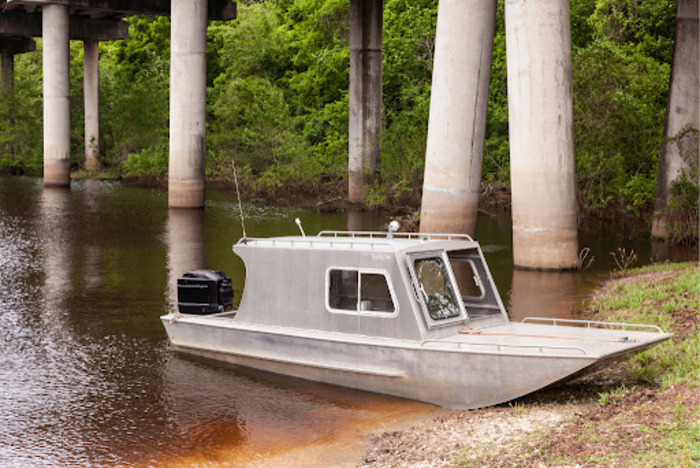
Red River
Located in the southern United States, the Red River is a major tributary of the Mississippi and Atchafalaya rivers. It’s a popular destination for angling enthusiasts, offering a variety of species and a serene environment.
The Red River is home to a wide array of species, including largemouth and spotted bass, crappie, and catfish. It’s an ideal location for those who enjoy the thrill of catching different species.
When it comes to angling at Red River, it’s best to have a good understanding of the river’s layout and fish habits. Using the right bait can significantly increase your chances of a successful catch. Be sure to check local regulations before heading out.
Mississippi River
The Mississippi River, one of the longest rivers in North America, runs through several U.S. states, including Louisiana. It’s a haven for anglers due to its diverse fish population and picturesque views.
The river is teeming with various species such as catfish, carp, and walleye. Each species requires a different tactic, so be sure to equip yourself with the right knowledge and gear.
Angling in the Mississippi River requires patience and a strategic approach. Knowing the right time to catch and using the appropriate bait for the species you’re targeting is crucial. Remember, safety should be a priority when angling in large rivers.
Pearl River
The Pearl River, located towards the eastern side of Louisiana, is another splendid destination for freshwater angling. The river’s calm waters and rich biodiversity make for an excellent angling experience.
The Pearl is known for its bass, catfish, and sunfish populations. Each of these species offers a unique angling experience, making the river a must-visit destination for any angling enthusiast.
To maximize your angling experience at the Pearl River, it’s advisable to familiarize yourself with the behavior of the fish species inhabiting the river. Using the correct bait and equipment will also go a long way in ensuring a fruitful angling trip.
Sabine River
This river forms part of the border between Texas and Louisiana, winding its way through a landscape steeped in beauty. The Sabine River is steeped in history. Its waters have been a vital resource for generations of anglers and nature enthusiasts. Today, it remains a prime location for those seeking a quiet retreat and a promising catch.
The Sabine River is home to a variety of fish that make for an exciting angling trip. You can expect to find catfish, alligator gar, and even sturgeon in these waters.
When hooking in the river, it’s best to utilize live bait for catfish and artificial lures for alligator gar.
Pontchartrain Basin
The Pontchartrain Basin is located in southeast Louisiana, encompassing Lake Pontchartrain and several other smaller bodies of water. This basin offers a unique fishing experience, with its diverse habitats and proximity to New Orleans. It’s a beloved destination for locals and tourists alike.
The basin is teeming with different species, including drum, speckled trout, and flounder.
The optimal method for angling often involves live bait. Remember to check local regulations for size and catch limits!
Caddo Lake
Caddo Lake, located in the northwest corner of Louisiana, straddles the Louisiana-Texas line. The lake is well-known for its scenic beauty, characterized by its cypress trees draped with Spanish moss. It provides a tranquil environment perfect for a day of catching.
Caddo is populated with largemouth bass, chain pickerel and white perch, among others. When hooking in this waterbody, consider using artificial lures or live bait, depending on the species you’re targeting. Always remember, safety comes first, so wear a life jacket.
Lake Bistineau
Located in northwest Louisiana, Lake Bistineau is a picturesque body of water that extends over 17,200 acres. Formed over 200 years ago, this lake is a renowned angling destination thanks to its abundant underwater flora, which provides an ideal habitat for an array of fish species.
Lake Bistineau is home to a variety of fish, such as largemouth bass, crappie, and bluegill.
When angling in Lake Bistineau, it’s recommended to use natural baits like worms or minnows, as they tend to attract the local fish species. Also, the early morning or late evening hours are often the most productive.
Caney Lake
Caney Lake is situated near Chatham in Jackson Parish, in the upper region of Louisiana. This 5,000-acre man-made reservoir is famous for its record-breaking largemouth bass.
In addition to the largemouth bass, Caney Lake is also populated with crappie, bluegill, and channel catfish.
To increase your chances of a successful catch, consider using artificial lures that mimic the local prey of the fish. Also, different species tend to be more active during different times of the day, so plan your angling trip accordingly.
Lake D’Arbonne
Lake D’Arbonne is a beautiful body of water located southwest of Farmerville in northern Louisiana. Covering 15,250 acres, this lake is known for its abundance of crappie, also known as sac-a-lait in the local area.
Apart from its large population of crappie, Lake D’Arbonne also hosts largemouth bass, catfish, bluegill, and red-ear sunfish.
When angling in Lake D’Arbonne, it’s beneficial to learn about the seasonal patterns of the fish. For example, crappie are known to move towards shallow waters during the spring. In addition, using live bait such as minnows or jigs can be highly effective.
Poverty Point Reservoir
Located in the northeastern part of Louisiana, Poverty Point Reservoir is near the town of Delhi. It’s easily accessible and offers a scenic view that is sure to appeal to any outdoors enthusiast.
Poverty Point Reservoir is an artificial body of water created in 2001, and it spans over 2,700 acres. The reservoir is named after the nearby Poverty Point World Heritage Site, adding a bit of historical significance to your angling trip.
The reservoir is home to a variety of species, including crappie, catfish, and sunfish. The most sought-after species here is the crappie, with both white and black crappie present in large numbers.
For the best chances of success, consider using live minnows or jigs as bait for crappie. Early spring is often the best time for crappie catching, as this is when they spawn and are most active.
Black Lake
Black Lake is located in northwestern Louisiana, near the town of Campti. It’s a bit of a drive from the major cities, but the trip is well worth it for the excellent angling opportunities. This lake is a natural body of water covering over 8,400 acres. It’s known for its cypress trees and beautiful scenery, as well as its abundant fish population.
Black Lake is home to a variety of fish, including catfish, sunfish, and crappie. The lake is particularly known for its large and aggressive largemouth bass, which can provide quite a thrill for any angler.
If you’re after largemouth bass, consider using plastic worms or spinnerbaits. The best time to catch bass is often early morning or late evening, as they tend to be most active during these times.
Essential Equipment for Freshwater Catching

The Right Rod and Reel
Rods and reels for Louisiana freshwater should match the size and behavior of targeted species. Lengths from 5-10 ft with lure weights of 10-100 grams are common.
Tackle Box Essentials
Louisiana tackle may include crankbaits, spoons, jig heads, offset hooks, sinkers, poppers, spinners, plastic/rubber/hair baits, and various ground baits.
Louisiana-Specific Gear
Legal gear in Louisiana includes rods, bow & arrow, gigs, dip nets, cast nets, hoop nets, slat traps, trotlines, limb lines and jug lines. Limits exist on numbers and sizes.
Gear Restrictions by Species
Special restrictions apply for species. Spearguns and bow fishing are prohibited for bass and sunfish, but snagging/noodling is allowed for catfish, carp and buffalo.
Read more: Anglers Guide to Massachusetts Freshwater Fish Species
Legal Bait Species
Worms, grubs, insects, shrimp, frogs, corn, dough, cheese, bread etc are legal bait. Live fish may not be used.
For more detailed and up-to-date information on permits and current restrictions on angling equipment, visit the eRegulations website.
Essential Tips for Catching Fish in Louisiana’s Freshwater
Techniques for Catching
Anglers use various techniques to catch different Louisiana freshwater species based on conditions and personal preference, including:
- Bait Catching: Using live or prepared bait on hooks/lines to attract fish through scent, movement, etc. Different baits target different species.
- Lure Casting: Casting simulated fish-like lures and retrieving them in ways that trigger fish to strike. Color, action and depth are key factors.
- Fly Fishing: Casting specialized “flies” with fly rods to imitate small prey. This technical method works for some Louisiana species.
Seasonal Factors Affecting Fish Catch
Here are some details on how seasonal changes can impact angling success in Louisiana’s freshwaters:
Spring (March-May):
- Warming water temperatures stimulate fish feeding and activity levels after winter dormancy. A productive time for many species.
- Spawning seasons mean different species congregate in shallows guarding nests (e.g. crappie, bass, bream). Target these areas.
- Increased rainfall can swell rivers and stir up nutrients. Fish often feed actively in rising water.
- Flooding may provide access to additional flooded cover and backwaters for ambush predators like bass.
Summer (June-August):
- Hot temperatures cause fish to move to deeper holes and structures offering cooler water refuge.
- Vegetation growth is peak, giving cover but making casting challenging in shallows.
- Low clear water requires stealthier presentations with finesse lures/baits.
Fall (September-November):
- Cooling water coupled with fall food abundance makes fall productive. Fish are actively fed to store fat for winter.
- Fall turnover lake mixing brings oxygen and baitfish deep, leading to good trolling/deep structure bites.
Winter (December-February):
- Colder temperatures mean lethargic metabolisms and very slow feeding. Still some warmer day opportunities.
- Fish congregate in deeper pools and structures. Slow presentations are key.
Methods for Angling Freshwater Fish in Louisiana
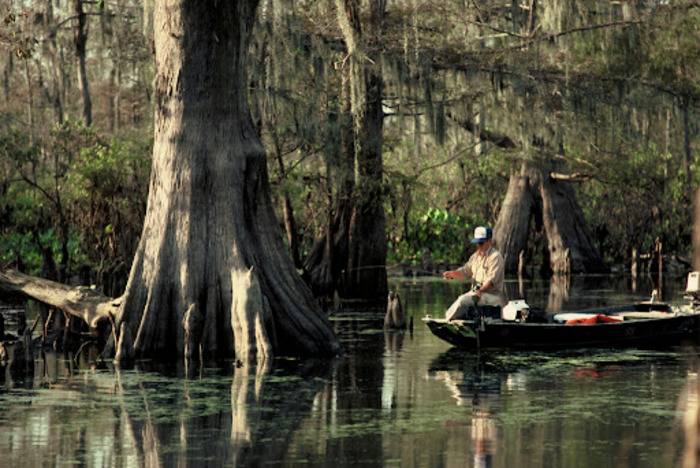
Permitted Methods
- Hook and line
- Bow and arrow
- Yo-yos/trigger devices
- Recreational slat traps (with limits)
- Recreational crawfish traps
- Standard spearing equipment
- Barbed gig (for flounder only)
- Recreational hoop nets
- Recreational wire nets
- Hand-grabbing (for catfish)
- Bream traps (within size limits)
Non-Permitted Methods
- Poisons
- Spears (except for gar, carp, etc)
- Stupefying substances
- Explosives
- Guns
- Electric shocking devices
- Snagging devices (except for catfish, carp)
- Aerial surveillance (except for some species)
For more detailed and up-to-date information on permits and current regulations for angling methods, visit the eRegulations website.
Restrictions on Freshwater Angling in Louisiana
Basic Recreational Fishing License
Required for all freshwater angling. Also required to use:
- Bow and arrow
- Barbed or barbless spear
- Frog gig/catcher
Limits, restrictions and exceptions
Daily Bag Limit
- Cannot exceed limits per species while on the water.
Possession Limit
- Cannot possess more than double the daily limit, except 100 crappies at Toledo Bend Reservoir.
Prohibited Freshwater Species
- Tilapia, Asian carp, electric eel, etc. Check regulations.
Restrictions and Exceptions by Angling Method
- Special rules for trotlines, limb lines, spearing, noodling, dip nets, etc.
Restrictions by Location
- Specific water bodies prohibit nets, trotlines and traps. Check regulations.
Check the rules on the official eRegulations website.
Conclusion: Embarking on Your Louisiana Freshwater Angling Adventure
Louisiana’s rich freshwater fisheries offer exciting adventures for anglers of all levels. Wherever you choose to cast your line, embrace the spirit of responsibility, conservation and respect.
Follow regulations carefully, properly handle fish, and thoughtfully manage this renewable yet fragile resource for future generations to enjoy.
Approach each day afield as a gift. Savor the serenity of still backwaters, the thrill of fighting fish, and a feast for the senses to be immersed in nature’s league.
Return home not just with a cooler of fillets, but memories to last a lifetime and inspiration to plan your next Louisiana angling trip.
FAQs
Q: What are some popular fish species found in the freshwater bodies of Louisiana?
A: Freshwater bodies in Louisiana are home to a variety of fish species including bass, bream, catfish, crappie, and garfish.
Q: Where can I find good angling spots for freshwater fishing in Louisiana?
A: Some popular angling spots for freshwater catching in Louisiana include Chicot Lake, Tensas River National Wildlife Refuge, Bogue Chitto State Park, and Natchitoches.
Q: What are some tips for catching bass in freshwater bodies in Louisiana?
A: When catching bass in freshwater bodies in Louisiana, it is recommended to use lures or baits that resemble the natural prey of bass such as crayfish, frogs, or small fish.
Q: What is the maximum number of pounds required to catch and keep fish for recreational anglers in Louisiana?
A: Recreational anglers in Louisiana are allowed to keep a maximum of 50 pounds of fish per person, per day, unless otherwise specified by specific regulations.
Q: What is the significance of LDWF in the context of freshwater angling in Louisiana?
A: LDWF stands for the Louisiana Department of Wildlife and Fisheries, which is responsible for managing and regulating freshwater angling activities in the state.
Q: Are there any specific regulations or restrictions for freshwater angling along the coastal areas of Louisiana?
A: Yes, there are specific regulations and restrictions for freshwater angling along the coastal areas of Louisiana due to the influence of brackish water and coastal ecosystems on the fish species and habitats.

